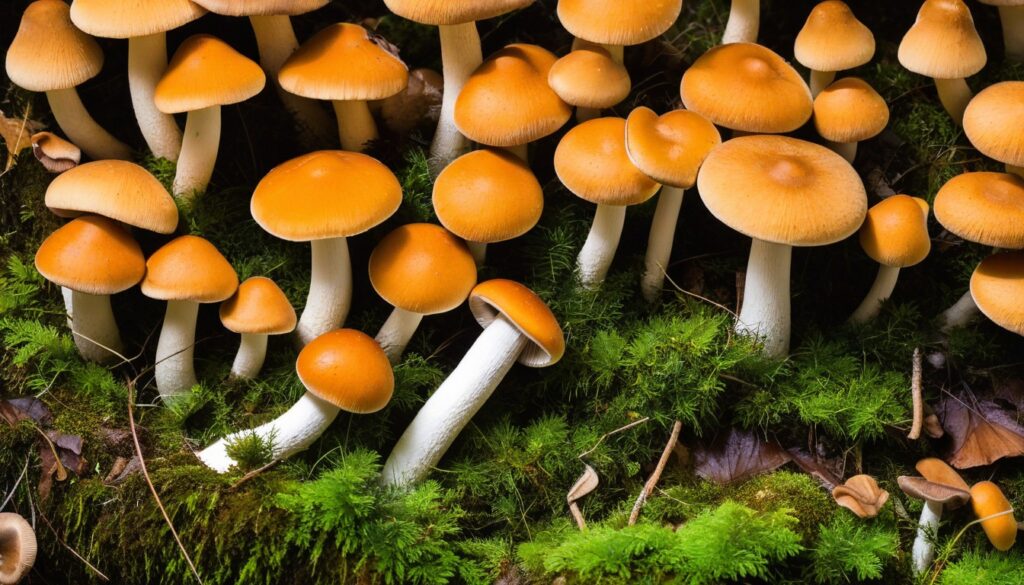Welcome to our comprehensive guide to edible fall mushrooms in Missouri. Fall is the perfect time to forage for mushrooms, and Missouri boasts an incredible diversity of local varieties. Whether you’re an experienced forager or just getting started, our guide will provide you with the information you need to safely identify and enjoy the delicious mushrooms that grow in our state.
Key Takeaways
- Discover the enchanted world of edible fall mushrooms in Missouri
- Find out about the rich diversity of fall mushrooms that thrive in the state
- Learn essential safety tips for responsible mushroom foraging
- Explore the top spots for foraging fall mushrooms in Missouri
- Identify different edible fall mushrooms found in Missouri with ease
The Richness of Missouri’s Mushroom Diversity
Missouri is a state of diverse landscapes, which is reflected in the wide variety of edible mushrooms that flourish during the fall season. From the cherished morels to lesser-known, yet equally delicious mushrooms, Missouri is a forager’s paradise. The state’s diverse ecology provides an ideal breeding ground for a range of mushroom species, all with their unique flavors and textures.
Some of the most prevalent mushrooms in Missouri include the yellow-gilled chanterelles, the earthy and flavorful boletus mushrooms, the meaty and textured hen-of-the-woods, and the robust and woodsy oyster mushrooms. In addition to these, Missouri also boasts a collection of rare and unique mushrooms that are found only in certain areas of the state.
|
Mushroom Variety |
Flavor Profile |
Common Harvest Locations |
|---|---|---|
|
Morels |
Nutty, meaty |
Forested areas with rich soil |
|
Chanterelles |
Yellow, delicate, earthy |
Woodlands with oak or beech trees |
|
Boletus |
Earthy, nutty, and mild |
Broad-leafed forests with rich soil |
|
Hens-of-the-Woods |
Earthy, savory, meaty |
Deciduous wooded areas with oak trees |
|
Oyster |
Robust, meaty, woodsy |
Dead or dying deciduous trees |
Whether you’re a seasoned forager or just beginning, the diverse selection of mushrooms around Missouri means you’ll have an endless supply of delicious options to explore.
Safety First: Tips for Responsible Mushroom Foraging
Foraging for edible fall mushrooms can be a fun and rewarding activity. However, it is crucial to prioritize safety before embarking on any foraging adventure.
Important Safety Precautions
Before foraging, make sure to inform someone of your plans, including where you will be and when you expect to return. It’s also wise to carry a first aid kit and a fully charged cell phone. You never know when an accident might happen, so it’s always best to be prepared.
Proper Tools for Mushroom Foraging
The right tools can make all the difference when foraging for mushrooms. Be sure to bring a sharp knife, a basket or cloth bag to store your finds, and gloves to protect your hands. It’s also a good idea to bring a field guide to help you identify the mushrooms you find.
Avoiding Poisonous Mushrooms
One of the biggest dangers while foraging for mushrooms is accidentally picking a poisonous variety. Learning how to identify mushrooms accurately is crucial. Avoid picking any mushrooms that look similar to poisonous varieties and never consume anything you are unsure of.
“When in doubt, throw it out”
-Anonymous
With these tips in mind, you can safely enjoy the abundance of edible mushrooms that Missouri has to offer while preserving its natural beauty. Happy foraging!
Top Spots for Foraging Fall Mushrooms in Missouri
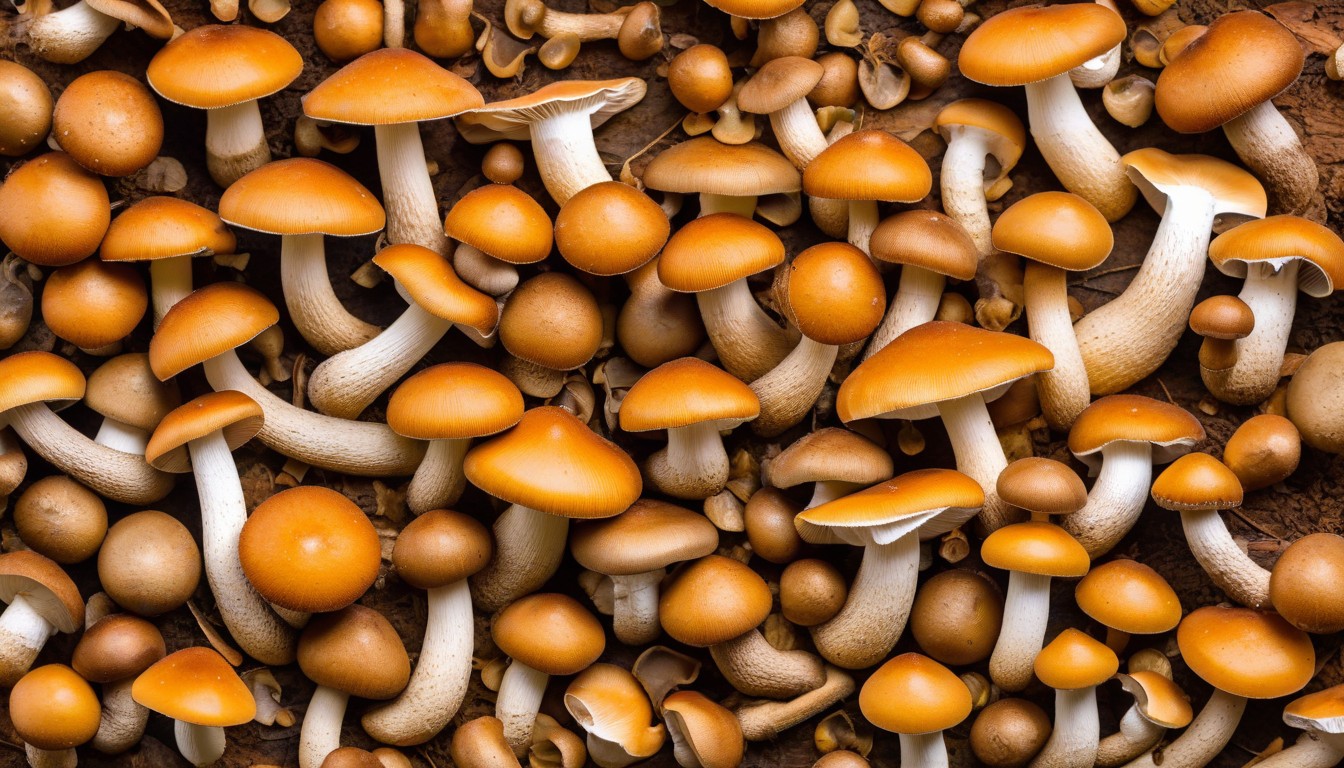
If you’re looking for the best spots to forage for fall mushrooms in Missouri, you’re in luck. Our state offers a diverse range of habitats that are conducive to growing a variety of edible mushrooms. Here are some of the top places you should explore:
|
Location |
Mushroom Types |
|---|---|
|
Mark Twain National Forest |
Chanterelles, Morels, Hen of the Woods, Lobster Mushrooms |
|
Rock Bridge Memorial State Park |
Honey Mushrooms, Chicken of the Woods |
|
Katy Trail State Park |
Oyster Mushrooms, Black Trumpets, Puffballs |
|
Cliff Cave Park |
Black Trumpets, Lion’s Mane, Morels |
These are just a few of the many locations in Missouri where you can find delicious fall mushrooms. Remember to always forage responsibly, following ethical practices, and leaving minimal impact on the environment. Enjoy the natural beauty of Missouri while discovering the culinary delights of fall mushroom foraging.
Identifying Edible Fall Mushrooms: A Beginner’s Guide
Exploring the world of edible fall mushrooms can be a daunting experience. However, with this beginner’s guide, identifying these tasty treasures can be a breeze.
When starting, it’s important to focus on the key features that make each mushroom unique. Characteristics like cap shape, size, and color, as well as stem texture, gill spacing, and overall appearance can all help differentiate between safe and potentially poisonous varieties.
It’s also crucial to be aware of common look-alikes, which can often be mistaken for edible mushrooms. One such example is the toxic Jack O’Lantern mushroom, which bears a striking resemblance to the edible Chanterelle.
When in doubt, it’s always best to err on the side of caution. If you’re not 100% sure of the mushroom’s identity, don’t eat it. Instead, consult an expert or reference a trusted guidebook to ensure you’re consuming safe, edible mushrooms.
Common Characteristics of Edible Fall Mushrooms
|
Mushroom |
Key Features |
|---|---|
|
Chanterelle |
Fruity aroma, trumpet-shaped cap, ridges instead of gills, golden yellow to orange color |
|
Hedgehog |
Sparse spines instead of gills, light brown to orange cap, meaty texture |
|
Honey Mushroom |
Skinny, wavy stem, smooth cap with white to brown color, often found in clusters at the base of trees |
|
Hen-of-the-Woods |
Fan-shaped cap, light brown to grey color, meaty texture, often found growing at the base of oak trees |
|
Oyster Mushroom |
Oyster-shaped cap, white to grey color, delicate texture, often found growing on dead or dying trees |
By understanding the distinguishing features of these and other edible fall mushrooms, and avoiding common identification pitfalls, you can safely enjoy the delicious bounty of Missouri’s natural landscapes.
Delicious Edible Fall Mushrooms in Missouri
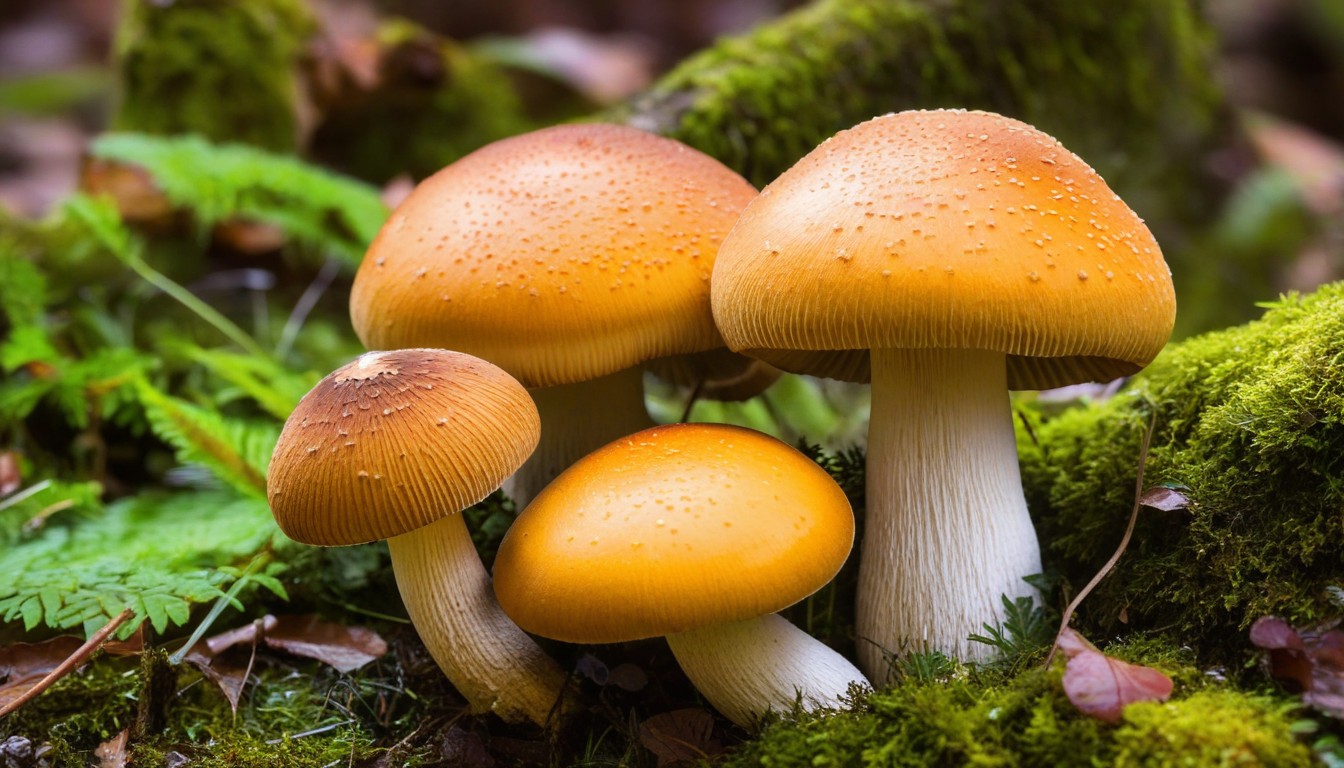
If you’re looking to elevate your fall cuisine, look no further than Missouri’s delicious edible fall mushrooms. From the nutty and earthy flavor of chanterelles to the meaty texture of hen-of-the-woods, these unique mushrooms offer a range of distinctive flavors and culinary uses.
|
Mushroom Variety |
Flavor Profile |
Culinary Uses |
Popular Recipes |
|---|---|---|---|
|
Chanterelles |
Earthy, nutty |
Perfect for sauces, soups, and sautés |
Chanterelle and Goat Cheese Tart |
|
Hen-of-the-Woods |
Meaty, nutty |
Great in stir-fries, roasted as a side dish, or as a meat substitute |
Hen of the Woods Mushroom and Caramelized Onion Tart |
|
Oyster Mushrooms |
Mild, sweet |
Perfect substitute for meat in classic dishes like stews and pasta sauces |
Mushroom Stroganoff |
Other popular edible fall mushrooms in Missouri include shiitake, black trumpet, and lion’s mane mushrooms, each with their own unique flavor and culinary uses.
When cooking with these delectable mushrooms, it’s important to let their flavors shine through. Keep it simple and let the mushrooms be the star of the dish, whether you’re sautéing them in butter, adding them to a soup, or mixing them into a stir-fry.
With their rich flavor and versatility, Missouri’s edible fall mushrooms are a true culinary treasure. Start experimenting with different varieties and recipes to truly appreciate all that these mushrooms have to offer.
Harvesting and Preserving Fall Mushrooms for Year-round Enjoyment
Foraging and collecting edible fall mushrooms is a rewarding experience, but knowing how to harvest and preserve them properly is just as important as identifying them correctly. By properly harvesting and preserving fall mushrooms, you can enjoy them year-round. Here are some tips and techniques to help extend the shelf life of your foraged mushrooms:
Harvesting Fall Mushrooms
Timing is crucial when it comes to harvesting fall mushrooms. For the best flavor, harvest mushrooms when they are still young and have not opened completely. It’s also important to avoid picking mushrooms that are too old or damaged, as they may have a bitter taste or unpleasant texture. When harvesting, cut the mushroom stems at the base with a sharp knife or scissors, leaving a small portion of the stem attached to the cap.
Cleaning and Storing Fall Mushrooms
It’s important to clean and store fall mushrooms properly to maintain their quality and freshness. To clean them, wipe the caps with a damp paper towel to remove any dirt or debris, being careful not to saturate them with water as this can cause them to spoil more quickly. After cleaning, store the mushrooms in a paper or cloth bag or a container with a loose-fitting lid. Avoid using plastic bags or containers that can trap moisture and cause the mushrooms to mold or rot.
Preserving Fall Mushrooms
There are several methods to preserve fall mushrooms, including dehydration, canning, and freezing. Dehydration is a popular method that involves removing the moisture from mushrooms to extend their shelf life. To do this, slice the mushrooms thinly and place them on a baking sheet in a single layer. Put them in a preheated oven or dehydrator at a low temperature until they are dry and crisp. Once dried, store them in an airtight container. Canning and freezing are also effective preservation methods for fall mushrooms. To can mushrooms, pack them tightly into sterilized jars and process them in a pressure canner according to the manufacturer’s instructions. For freezing, slice the mushrooms and blanch them in boiling water for a few minutes, then cool and store them in freezer-safe containers or bags.
Methods of Preserving Fall Mushrooms
|
Preservation Method |
Description |
|---|---|
|
Dehydration |
Removes moisture from mushrooms to extend shelf life. Slice mushrooms thinly, place on a baking sheet and dry in an oven or dehydrator at low temperature. Store dried mushrooms in airtight container. |
|
Canning |
Pack mushrooms into sterilized jars and process them in a pressure canner according to manufacturer’s instructions. |
|
Freezing |
Slice mushrooms, blanch in boiling water for a few minutes, cool and store in freezer-safe containers or bags. |
By harvesting and preserving fall mushrooms properly, you can enjoy their delicious flavors and health benefits all year long. With a little care and attention, your foraged mushrooms can stay fresh and flavorful, providing a taste of the fall season whenever you want it.
Cooking with Edible Fall Mushrooms: Inspiring Recipes
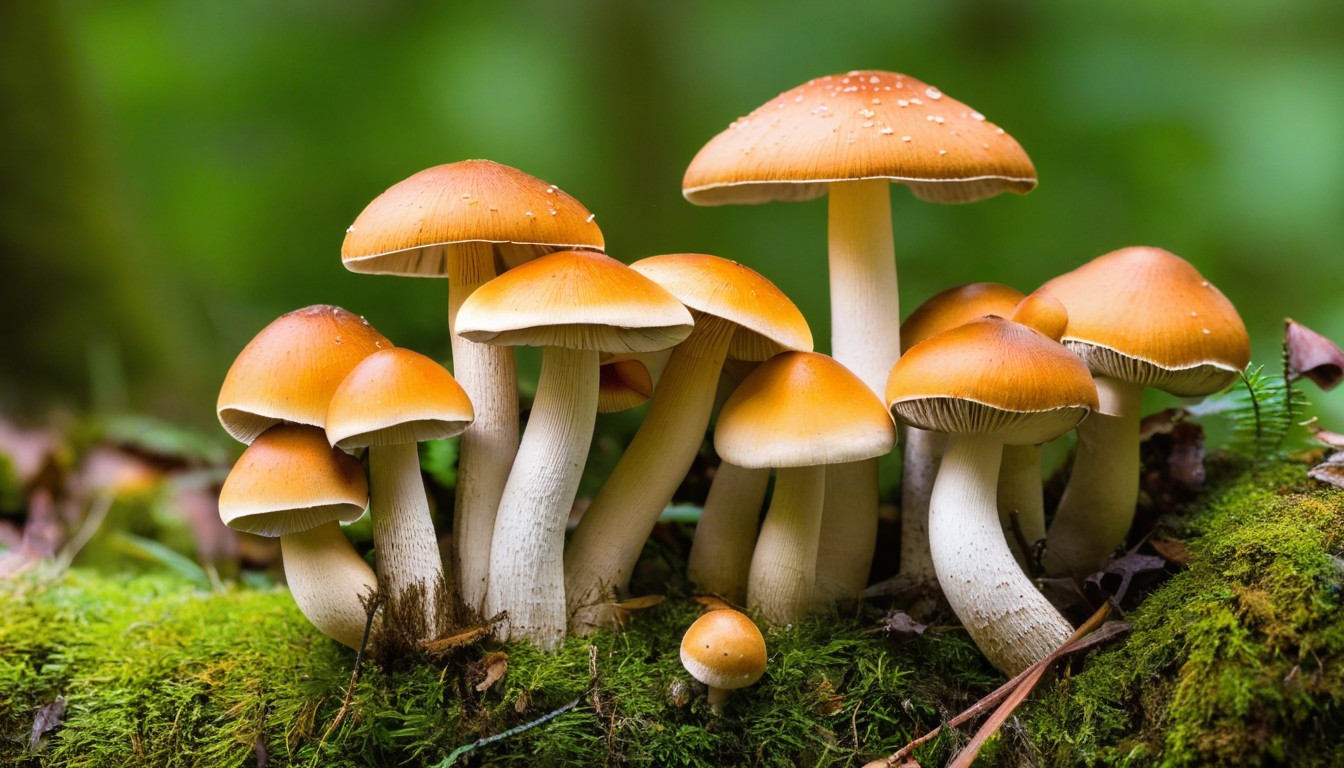
The best way to fully appreciate the flavors and versatility of edible fall mushrooms in Missouri is to incorporate them into your cooking. In this section, we’ve compiled some of the most inspiring recipes that will expand your culinary horizons.
Fall Mushroom Soup
The earthy flavors of fall mushrooms shine in this comforting soup recipe. Perfect for a cozy night in or as an elegant starter for a dinner party.
- 1 pound of assorted fall mushrooms
- 1/2 cup chopped onion
- 3 cloves of garlic, minced
- 4 cups of chicken or vegetable broth
- 1 cup of heavy cream
- 2 tablespoons of unsalted butter
- Salt and pepper to taste
Saute the chopped onion and garlic in the butter until soft. Add the mushrooms and cook until browned. Add the broth, salt, and pepper and bring to a boil. Reduce the heat and let it simmer for 10-15 minutes, until the mushrooms are tender. Using an immersion blender, puree the soup until smooth. Add the heavy cream and heat through. Serve hot, garnished with chopped chives or a dollop of sour cream.
Chanterelle Risotto
This elegant risotto recipe highlights the delicate flavor of chanterelle mushrooms and pairs perfectly with a crisp white wine.
- 1 pound fresh chanterelle mushrooms, cleaned and sliced
- 1 shallot, finely chopped
- 2 cloves of garlic, minced
- 1 cup of Arborio rice
- 4 cups of chicken or vegetable broth
- 1/2 cup of grated Parmesan cheese
- 1/4 cup of dry white wine
- 2 tablespoons of unsalted butter
- Salt and pepper to taste
Saute the shallot and garlic in the butter until soft. Add the sliced mushrooms and cook until browned. Add the Arborio rice and stir until the grains are coated with the butter. Add the white wine and stir until it is absorbed. Add the broth, one cup at a time, stirring constantly until each cup is absorbed before adding the next. Cook for about 20 minutes, or until the rice is tender and creamy. Add the grated Parmesan cheese and stir until melted. Serve hot with a garnish of chopped parsley.
Hen-of-the-Woods Tacos
These delicious tacos are a playful take on traditional Mexican cuisine. The meaty texture of hen-of-the-woods mushrooms is complemented by a tangy slaw and a zesty lime crema.
- 1 pound of hen-of-the-woods mushrooms, cleaned and sliced
- 1 jalapeno pepper, seeded and diced
- 1/2 cup chopped onion
- 2 cloves of garlic, minced
- 1/2 cup of vegetable broth
- 2 tablespoons of olive oil
- 1 lime, juiced
- 1/4 cup of sour cream
- 1 cup of shredded cabbage
- 8 small corn tortillas, warmed
- Salt and pepper to taste
Saute the chopped onion and jalapeno in the olive oil until soft. Add the minced garlic and cook for an additional minute. Add the sliced mushrooms and cook until browned. Add the vegetable broth, salt, and pepper and simmer until the mushrooms are tender. In a small bowl, mix together the lime juice and sour cream to make the crema. In another bowl, toss the shredded cabbage with a pinch of salt and a splash of lime juice to make the slaw. Serve the warm tortillas with the mushroom filling, slaw, and crema on top.
These recipes are just a few examples of the countless possibilities for cooking with edible fall mushrooms in Missouri. Experiment with different varieties and techniques to create your own unique dishes, and enjoy the delicious flavors of the season.
Mushroom Foraging Etiquette: Preserving Nature’s Balance
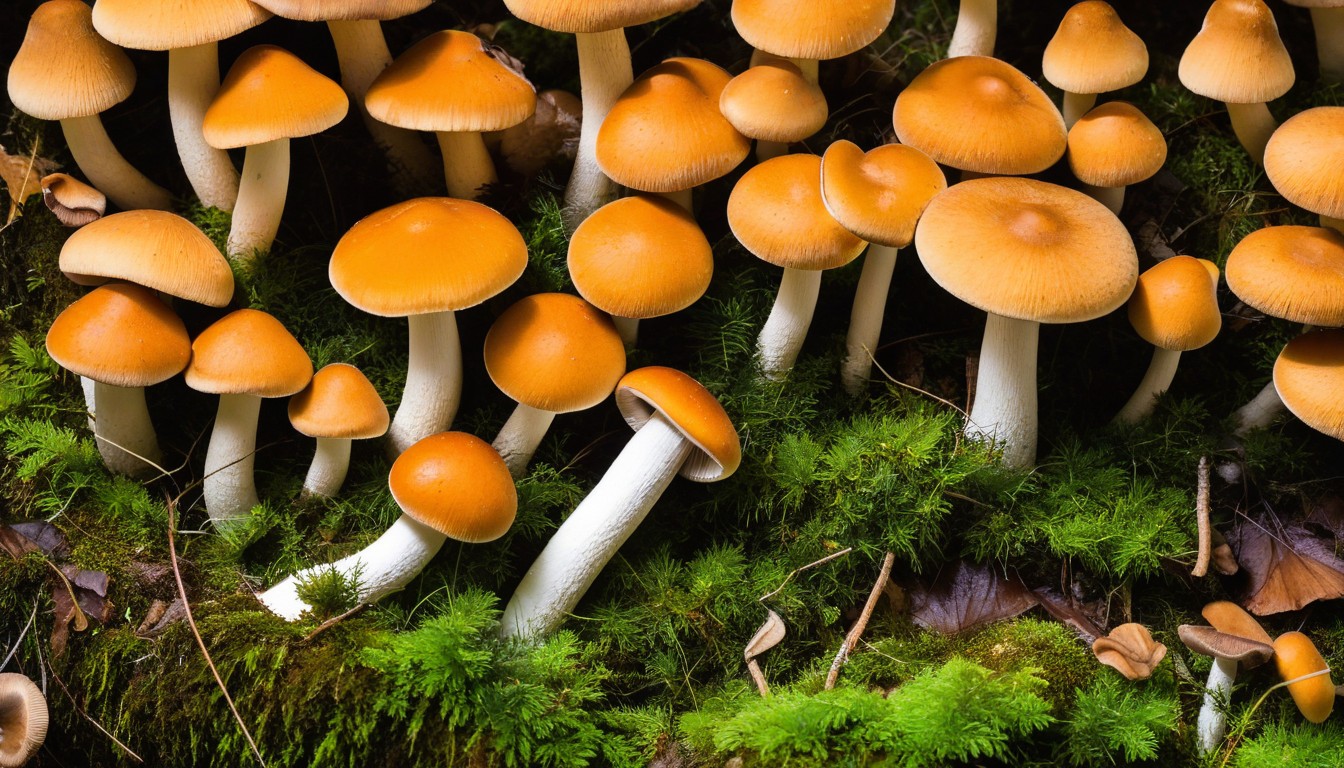
Foraging for mushrooms can be a fulfilling and sustainable way to enjoy nature’s bounty. However, it’s crucial to practice responsible mushroom foraging etiquette to preserve the delicate balance of Missouri’s ecosystems. By following these ethical guidelines, you can ensure the longevity of the habitats where mushrooms thrive and protect the natural environment for future generations.
Guidelines for Ethical Mushroom Foraging
- Respect private property: Always seek permission before foraging on private land. Respect the landowner’s boundaries and rights.
- Harvest only what you need: Take only the mushrooms that you will use and leave the rest for others to enjoy, as well as for the natural ecosystem.
- Identify accurately: Properly identify the mushrooms you intend to harvest and leave any uncertain specimens. Misidentification of mushrooms can have serious consequences, so it’s crucial to be sure of what you’re picking.
- Leave no trace: Stay on designated trails and avoid trampling on fragile habitats to minimize environmental impact. Remove any trash or litter you bring and leave the area cleaner than you found it.
- Use the right tools: Avoid using knives or sharp tools that can damage mushrooms, mycelium networks, or the environment. Instead, use scissors or your hands to carefully pick mushrooms.
By following these best practices, you can become a responsible mushroom forager and contribute to the preservation of Missouri’s mushroom ecosystems. Remember, the key to sustainable foraging is always to leave nature better than you found it.
Dangers and Mistakes to Avoid in Mushroom Foraging
Although mushroom foraging can be a thrilling and rewarding experience, it’s important to be aware of the potential dangers and risks associated with it. By understanding these risks, you can take the necessary precautions to keep yourself and others safe.
Misidentification
One of the most significant dangers when mushroom foraging is misidentification. Some mushrooms are poisonous and can cause serious harm if ingested. It’s essential to properly identify fungi before consuming them. Take the time to research and learn about different types of mushrooms and their characteristics. If you’re unsure about a mushroom’s identity, avoid consuming it and seek the advice of an expert.
Poisonous Look-Alikes
Another danger associated with mushroom foraging is the possibility of confusing edible fungi with poisonous look-alikes. Some mushrooms have similar appearance and characteristics, making it challenging to distinguish between safe and toxic varieties. Always be cautious and examine each mushroom carefully before harvesting or eating them.
Environmental Hazards
In addition to poisonous fungi, other environmental hazards can pose a risk when foraging for mushrooms. Pay attention to your surroundings and avoid areas that may have been contaminated with pesticides, pollutants, or other harmful substances. Wear appropriate gear, such as boots and gloves, to protect yourself from insects, thorns, and other natural hazards.
“The rule of mushroom hunting: If in doubt, throw it out. Don’t take any chances with your health.”
Mistakes to Avoid
Aside from the dangers listed above, a few common mistakes can also affect your mushroom foraging experience. One mistake is harvesting too many mushrooms from one area, which can prevent the mushrooms from spreading and regenerating. Additionally, avoid pulling up mushrooms by their roots, as this can damage the surrounding mycelium.
Another mistake is failing to properly identify mushroom habitats. Different types of mushrooms grow in specific environments, such as under certain types of trees or in damp, shady areas. Without knowledge of these locations, you may struggle to find edible mushrooms and accidentally harvest toxic varieties.
Stay Safe and Enjoy the Fun
By being aware of the potential dangers and pitfalls of mushroom foraging, you can take the necessary steps to ensure a safe and enjoyable experience. Follow these tips, do your research, and never take risks with your health. Mushrooms are a delicious and nutritious addition to any meal when properly sourced and prepared.
Foraging Groups and Resources in Missouri
Becoming a part of a local foraging community or accessing online resources can greatly enhance your mushroom foraging experience. Luckily, Missouri provides ample resources for mushroom enthusiasts. Check out the following foraging groups and resources for mushroom foragers:
Foraging Groups in Missouri
|
Name |
Description |
Contact Information |
|---|---|---|
|
St. Louis Wild Edibles |
A community of wild food enthusiasts who organize events and share knowledge about foraging edible plants and mushrooms. |
Email: stlwildedibles@gmail.com Website: www.stlwildedibles.com |
|
Columbia Area Mushroom Club |
A club for mushroom enthusiasts that meets monthly with group forays as well as educational programs and contests. |
Email: columbiaareamushroom@gmail.com Website: www.columbiamushroomclub.org |
|
Springfield Plateau Mushroom Club |
A club dedicated to the study and enjoyment of mushrooms that offers forays and educational programs for members. |
Email: spmushroomclub@gmail.com Website: www.spmushroomclub.org |
Resources for Mushroom Foragers
- Missouri Mycological Society: This organization provides information on local mushroom species, events, and offers educational resources on mushroom identification and foraging techniques.
- Missouri Department of Conservation: The department’s website features extensive information on local mushrooms, including descriptions and photographs for identification purposes.
- Midwest Wild Harvest Festival: This yearly festival brings together wild food enthusiasts and offers workshops, forays, and vendors selling wild edibles and products.
Joining a foraging group or accessing online resources can help you connect with like-minded individuals and expand your knowledge of Missouri’s mushroom ecosystems. Take advantage of these opportunities and enrich your mushroom foraging experience.
Conclusion
Exploring the world of edible fall mushrooms in Missouri is an adventure like no other. With this comprehensive guide, you can confidently forage for a variety of delicious mushrooms while taking in the natural beauty of Missouri.
Remember to prioritize safety first and always follow responsible foraging practices. With the help of our beginner’s guide, you can learn to identify the many edible fall mushrooms found in Missouri and enjoy some delightful recipes.
Preserving your foraged mushrooms is easy with the tips and techniques shared in this guide, so you can enjoy them throughout the year. Mushroom foraging etiquette is essential to maintaining the balance of nature, and we hope the information we have provided will help you on your journey.
Joining a local foraging community or accessing online resources can provide valuable support and knowledge for mushroom enthusiasts. We encourage you to explore the various foraging groups and resources available in Missouri.
So, are you ready to embark on your foraging adventure and indulge in the delights of fall mushroom cuisine? Happy hunting!
FAQ
Are all fall mushrooms in Missouri edible?
No, not all fall mushrooms in Missouri are edible. Some mushrooms can be toxic or deadly if consumed. It’s important to learn how to safely identify edible mushrooms and to avoid eating any mushrooms unless you are certain of their edibility.
How can I safely identify edible fall mushrooms?
Safely identifying edible fall mushrooms requires knowledge and practice. It’s recommended to learn from experienced foragers, consult reliable field guides, and attend mushroom identification workshops. Look for key features such as color, shape, and texture, and compare them to known edible varieties to ensure accurate identification.
Where can I find edible fall mushrooms in Missouri?
Missouri offers a variety of habitats that are conducive to the growth of edible fall mushrooms. Look for forests, woodlands, and areas with decaying organic matter such as fallen leaves or rotting logs. It’s best to explore different locations and seek out moist, shady areas for a higher chance of finding mushrooms.
What tools do I need for mushroom foraging?
When mushroom foraging, it’s helpful to have a few essential tools. These may include a sturdy knife for harvesting mushrooms, a basket or breathable bag to carry your finds, a field guide or smartphone app for identification purposes, and a small brush or soft cloth to clean off dirt or debris.
How should I store the mushrooms I’ve foraged?
After harvesting edible fall mushrooms, it’s recommended to store them properly to maintain their freshness. Avoid washing the mushrooms as they absorb moisture easily. Instead, gently brush off any dirt or debris and place them in a paper bag or a breathable container in the refrigerator. Avoid storing mushrooms in airtight containers as they can become slimy. Consume them within a few days for the best flavor.
Are there any poisonous mushrooms that resemble edible fall mushrooms in Missouri?
Yes, there are poisonous mushrooms that can resemble edible fall mushrooms in Missouri. It’s crucial to be familiar with the characteristics of the mushrooms you’re foraging for and to avoid consuming any mushrooms unless you are confident in their identification. When in doubt, consult with experienced foragers or mycologists to ensure your safety.
Are there any online resources or foraging groups for mushroom enthusiasts in Missouri?
Yes, there are online resources and foraging groups available for mushroom enthusiasts in Missouri. These resources can provide valuable information, identification guides, recipes, and opportunities to connect with fellow foragers. Some popular resources include websites like Missouri Mycological Society and the Missouri Department of Conservation. Additionally, joining local foraging groups or attending mushroom foraging events can provide a platform to learn from experienced foragers and share knowledge and experiences.

